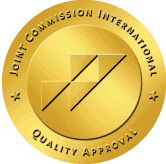Are you struggling with OxyContin addiction and searching for effective treatment in San Diego? You deserve compassionate, evidence-based care that addresses both the physical dependence and underlying factors driving your addiction. Professional treatment centers understand that OxyContin addiction is a complex medical condition requiring specialized intervention, not a moral failing.
What are the warning signs of OxyContin addiction?
You may be experiencing OxyContin addiction if you notice these physical, behavioral, and psychological indicators. Recognizing these signs early can be crucial for getting the help you need before the addiction progresses further.
Physical signs you might experience:
- Drowsiness or excessive sedation throughout the day
- Constricted pupils that don’t respond normally to light
- Persistent nausea and vomiting
- Chronic constipation
- Slowed or irregular breathing patterns
- Unexplained itching and excessive sweating
- Significant weight loss
- Poor coordination and balance
Behavioral changes you may notice:
- Taking higher doses than prescribed or using medication more frequently
- Seeking multiple prescriptions from different doctors
- Engaging in risky behaviors to obtain OxyContin
- Neglecting responsibilities at work, school, or home
- Isolating from family and friends
- Spending excessive time obtaining, using, or recovering from the drug
- Continuing use despite negative consequences
Psychological symptoms you might experience:
- Persistent depression and hopelessness
- Severe anxiety, especially when unable to use
- Dramatic mood swings
- Increased irritability and agitation
- Intense cravings for OxyContin
- Difficulty concentrating or making decisions
- Loss of interest in activities you once enjoyed
When does OxyContin use become a medical emergency?
You should seek immediate medical attention if you or someone you know experiences these dangerous symptoms. OxyContin overdose can be fatal, and recognizing these warning signs could save a life.
Critical overdose symptoms requiring emergency care:
- Extremely slow or stopped breathing (fewer than 10 breaths per minute)
- Blue lips, fingernails, or skin (cyanosis)
- Gurgling sounds or choking
- Unresponsiveness or inability to wake up
- Weak pulse or irregular heartbeat
- Cold, clammy skin
- Severe confusion or disorientation
- Loss of consciousness
Professional treatment centers report that over 81,000 Americans died from opioid overdoses in 2024, with prescription painkillers like OxyContin contributing significantly to this crisis. You don’t have to become another statistic – help is available now.
What happens during OxyContin withdrawal?
You may experience withdrawal symptoms when reducing or stopping OxyContin use, typically beginning within 8 to 24 hours after your last dose. Understanding what to expect can help you prepare for the recovery process and recognize why professional medical supervision is essential.
Early withdrawal symptoms (6-12 hours):
- Anxiety and restlessness
- Excessive sweating
- Frequent yawning
- Muscle aches and pains
- Runny nose and tearing
- Difficulty sleeping
- Increased heart rate
Peak withdrawal symptoms (1-3 days):
- Severe nausea and vomiting
- Diarrhea and abdominal cramps
- Intense drug cravings
- Goosebumps and chills
- Dilated pupils
- High blood pressure
- Severe insomnia
- Depression and mood swings
Subsiding phase (4-7 days):
- Gradual reduction in physical symptoms
- Persistent fatigue
- Continued irritability
- Ongoing sleep disturbances
- Lingering gastrointestinal discomfort
Treatment centers emphasize that withdrawal symptoms vary based on your length of use, dosage, and overall health. Professional medical supervision ensures your safety and comfort throughout this challenging process.
What treatment programs are available for OxyContin addiction?
You have access to multiple levels of care designed to meet your specific needs and circumstances. Treatment centers typically offer a continuum of evidence-based programs that can work together to support your recovery journey.
Drug Rehab – Comprehensive residential treatment: You’ll receive 24/7 medical supervision and intensive therapeutic intervention in a structured environment. This program provides the highest level of care for severe addiction, offering complete removal from triggers and access to round-the-clock support.
Partial Hospitalization Program (PHP) – Intensive daily treatment: You’ll attend treatment during the day and return home in the evenings, allowing you to maintain some family and work responsibilities while receiving intensive care. PHP typically involves 6-8 hours of treatment per day, 5-7 days per week.
Intensive Outpatient Program (IOP) – Structured outpatient care: You’ll participate in multiple weekly treatment sessions while living at home and potentially maintaining work or school commitments. IOP usually requires 9-12 hours of treatment per week across 3-4 days.
Outpatient Program (OP) – Flexible treatment scheduling: You’ll attend regular therapy sessions and support groups while maintaining your daily responsibilities. OP offers the most flexibility, typically requiring 1-3 hours of treatment per week.
Treatment centers often recommend starting with a higher level of care and stepping down as you progress. You might begin in Drug Rehab, transition to PHP, then move to IOP, and finally maintain recovery through OP.
What therapeutic approaches treat OxyContin addiction most effectively?
You’ll benefit from evidence-based therapies specifically designed to address opioid addiction. Professional treatment centers combine multiple therapeutic modalities to address both the physical dependence and psychological aspects of your addiction.
Core therapeutic interventions you’ll receive:
- Medication-Assisted Treatment (MAT) to reduce cravings and withdrawal symptoms
- Cognitive-Behavioral Therapy (CBT) to identify and change harmful thought patterns
- Individual counseling to address personal triggers and trauma
- Group therapy to build peer support and accountability
- Family therapy to repair relationships and build support systems
- Motivational interviewing to strengthen your commitment to recovery
- Relapse prevention planning to maintain long-term sobriety
- Dual diagnosis treatment for co-occurring mental health conditions
Specialized services that enhance recovery:
- Medical detoxification with 24/7 monitoring
- Psychiatric evaluation and medication management
- Nutritional counseling and wellness planning
- Vocational rehabilitation and life skills training
- Peer support groups and 12-step facilitation
- Trauma-informed care for underlying emotional issues
- Mindfulness and stress reduction techniques
How long does OxyContin addiction treatment typically last?
You should expect treatment to be a process rather than a quick fix. The duration of your treatment will depend on your individual needs, the severity of your addiction, and your progress through different levels of care.
Typical treatment timelines you can expect:
- Drug Rehab: 30-90 days, with some programs extending to 6 months or longer
- Partial Hospitalization Program (PHP): 2-8 weeks, depending on your progress
- Intensive Outpatient Program (IOP): 8-12 weeks, with possible extensions
- Outpatient Program (OP): 3-6 months or longer for ongoing support
- Medication-Assisted Treatment: Often continues for months or years
- Aftercare planning: Lifelong recovery support and relapse prevention
Treatment centers emphasize that recovery is a lifelong process. You may transition between different levels of care based on your changing needs, and many people benefit from ongoing support even after completing formal treatment programs.
What should you expect during your first treatment contact?
You can expect a compassionate, confidential assessment when you reach out for help. Treatment centers understand that taking this first step requires courage, and they’re committed to making the process as comfortable as possible for you.
Your initial assessment will include:
- Comprehensive medical evaluation and health screening
- Detailed addiction history and substance use patterns
- Mental health assessment and trauma screening
- Social and family history evaluation
- Insurance verification and financial planning
- Treatment recommendations based on your specific needs
- Immediate safety planning if you’re in crisis
- Scheduling for your first treatment appointment
You’ll work with experienced professionals who understand OxyContin addiction and can guide you toward the most appropriate level of care. The assessment process typically takes 1-2 hours and can often be completed the same day you call.
Contact Assure Recovery for OxyContin addiction treatment
You don’t have to face OxyContin addiction alone. Assure Recovery provides comprehensive, evidence-based treatment programs designed to help you achieve lasting recovery and reclaim your life. Our experienced team understands the complexities of opioid addiction and offers the full continuum of care, from Drug Rehab to Outpatient Programs.
When you contact Assure Recovery, you’ll speak with compassionate professionals who can conduct a confidential assessment and recommend the most appropriate treatment program for your needs. We accept most insurance plans and can help you understand your coverage options.



